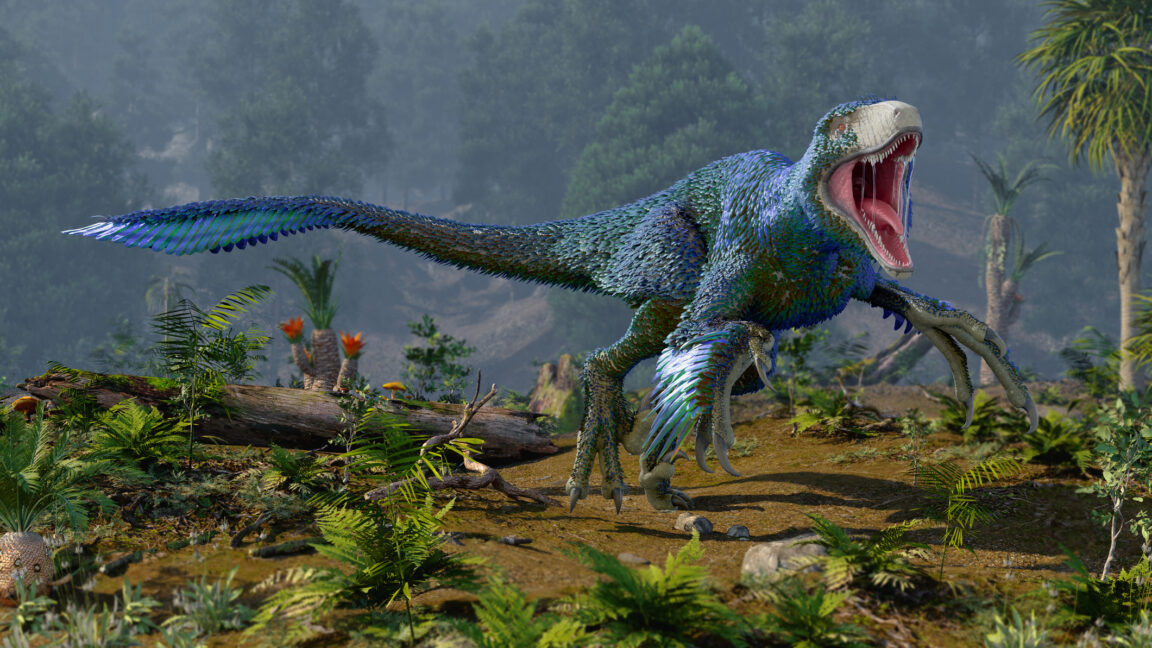
That seemingly changes as of now, with new argon dating of strata from the Naashoibito Member in the San Juan Basin of present-day New Mexico. Many dinosaur fossils have been obtained from this region, and we know the site differs from the sort of ecosystem found at Hell Creek. But it was previously thought to date back closer to a million years before the mass extinction. The new dates, plus the alignment of magnetic field reversals, tell us that the ecosystem was a contemporary of the one in Hell Creek, and dates to the last few hundred thousand years prior to the mass extinction.
Diverse ecosystems
The fossils at Naashoibito have revealed an ecosystem we now label the “Alamo Wash local fauna.” And they’re fairly distinct from the ones found in Wyoming, despite being just 1,500 kilometers further south. Analyzing the species present using ecological measures, the researchers found that dinosaurs formed two “bioprovinces” in the late Cretaceous—essentially, there were distinct ecosystems present in the northern and southern areas.
This doesn’t seem to be an artifact of the sites, as mammalian fossils seem to reflect a single community across both areas near the mass extinction, but had distinct ecologies both earlier and after. The researchers propose that temperature differences were the key drivers of the distinction, something that may have had less of an impact on mammals, which are generally better at controlling their own temperatures.
Overall, the researchers conclude that, rather than being dominated by a small number of major species, “dinosaurs were thriving in New Mexico until the end of the Cretaceous.”
While this speaks directly to the idea that limited diversity may have primed the dinosaurs for extinction, it also may have implications for the impact of the contemporaneous eruptions in the Deccan Traps. If these were having a major global impact, then it’s a bit unlikely that dinosaurs would be thriving anywhere.
Even with the new data, however, our picture is still limited to the ecosystems present on the North American continent. We do have fossils from elsewhere, but they’re not exactly dated. There are some indications of dinosaurs in the late Cretaceous in Europe and South America, but we don’t have a clear picture of the ecosystems in which they were found. So, while these findings help clarify the diversity of dinosaurs in the time leading up to their extinction, there’s still a lot left to learn.
Science, 2025. DOI: 10.1126/science.adw3282 (About DOIs).














Leave a Reply